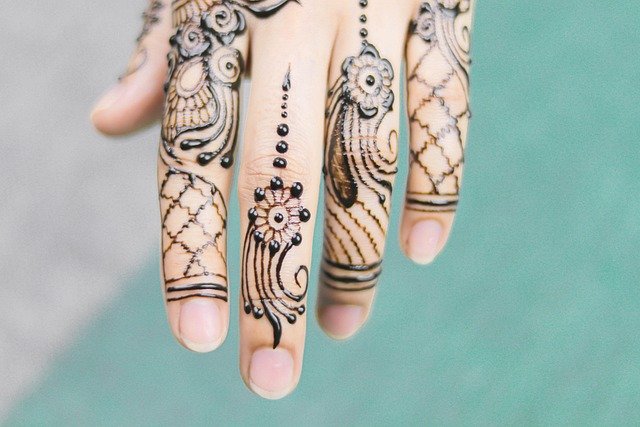The Ancient Art of Henna: Tradition Meets Modern Beauty
In the vibrant tapestry of global beauty practices, henna stands out as a time-honored tradition that has seamlessly woven its way into contemporary aesthetics. This natural dye, derived from the leaves of the Lawsonia inermis plant, has been used for centuries to adorn skin with intricate designs. From its origins in ancient Egypt and the Indian subcontinent to its current popularity in Western fashion, henna has transcended cultural boundaries to become a universal symbol of artistry and self-expression. The practice of applying henna, known as mehndi in South Asian cultures, is not merely a cosmetic endeavor but a ritual steeped in tradition, spirituality, and celebration. As we explore the rich history and modern applications of henna, we uncover a fascinating intersection of art, culture, and beauty that continues to captivate people around the world.

The Science Behind the Stain
Henna’s ability to create long-lasting designs on the skin is due to its unique chemical properties. The leaves of the henna plant contain a molecule called lawsone, which binds to the keratin in skin cells. When applied to the skin, the lawsone molecules penetrate the upper layers of the epidermis, creating a reddish-brown stain that can last for several weeks. The intensity and longevity of the stain depend on various factors, including the quality of the henna paste, the area of application, and individual skin chemistry.
Traditional Application Techniques
The art of applying henna requires skill, patience, and creativity. Traditionally, henna artists, known as mehndi artists in South Asia, create their designs freehand using a cone made from plastic or rolled mylar. The cone is filled with henna paste and used to draw intricate patterns on the skin. In some regions, wooden sticks or metal-tipped jacquard bottles are used for application. The process can take several hours for complex designs, and the paste is left on the skin for several more hours to achieve the deepest stain possible.
Modern Interpretations and Global Popularity
In recent decades, henna has gained popularity beyond its traditional cultural contexts. Western celebrities and fashion icons have embraced henna as a form of temporary body art, leading to its widespread adoption in mainstream beauty and fashion circles. This global interest has sparked innovation in henna designs, with artists blending traditional motifs with contemporary aesthetics. Modern henna art often incorporates elements from various cultures, resulting in fusion styles that appeal to a diverse clientele.
Health and Safety Considerations
While natural henna is generally safe for most people, the rising popularity of henna tattoos has led to concerns about the use of harmful additives. Some commercial henna products contain synthetic dyes or para-phenylenediamine (PPD), a chemical that can cause severe allergic reactions. Health authorities advise consumers to be cautious and choose reputable artists who use natural henna products. Additionally, it’s important to note that henna is not suitable for everyone, and individuals with certain skin conditions or allergies should consult a dermatologist before use.
Henna in Contemporary Beauty and Wellness
Beyond its decorative applications, henna has found a place in modern beauty and wellness routines. The plant’s natural conditioning properties make it a popular ingredient in hair care products, particularly for those seeking chemical-free alternatives to hair dye. Henna-based hair treatments are prized for their ability to strengthen hair, add shine, and provide natural color. In skincare, henna is sometimes used in cooling body treatments and is believed to have anti-inflammatory properties.
The Artistry of Henna: A Living Tradition
The enduring appeal of henna lies not only in its aesthetic beauty but also in its role as a living art form. Henna artists continually push the boundaries of the medium, creating stunning works that range from traditional bridal designs to avant-garde body art. Social media platforms have become showcases for these artists, allowing them to share their work with a global audience and inspire new generations of practitioners. This digital exposure has contributed to the cross-pollination of styles and techniques, further enriching the art form.
Environmental and Ethical Considerations
As with many traditional practices that gain global popularity, the increased demand for henna has raised questions about sustainability and ethical sourcing. The henna plant is primarily cultivated in arid regions, and there are concerns about the environmental impact of large-scale production. Some organizations are working to promote sustainable henna farming practices and fair trade initiatives to ensure that the benefits of the global henna market reach the communities where the plant is traditionally grown.
In conclusion, the ancient art of henna represents a beautiful confluence of tradition and modernity in the world of beauty. Its journey from sacred ritual to global phenomenon illustrates the power of cultural exchange and the universal human desire for self-expression through art. As henna continues to evolve and adapt to contemporary tastes, it remains a testament to the enduring appeal of natural beauty practices and the rich tapestry of human creativity.





